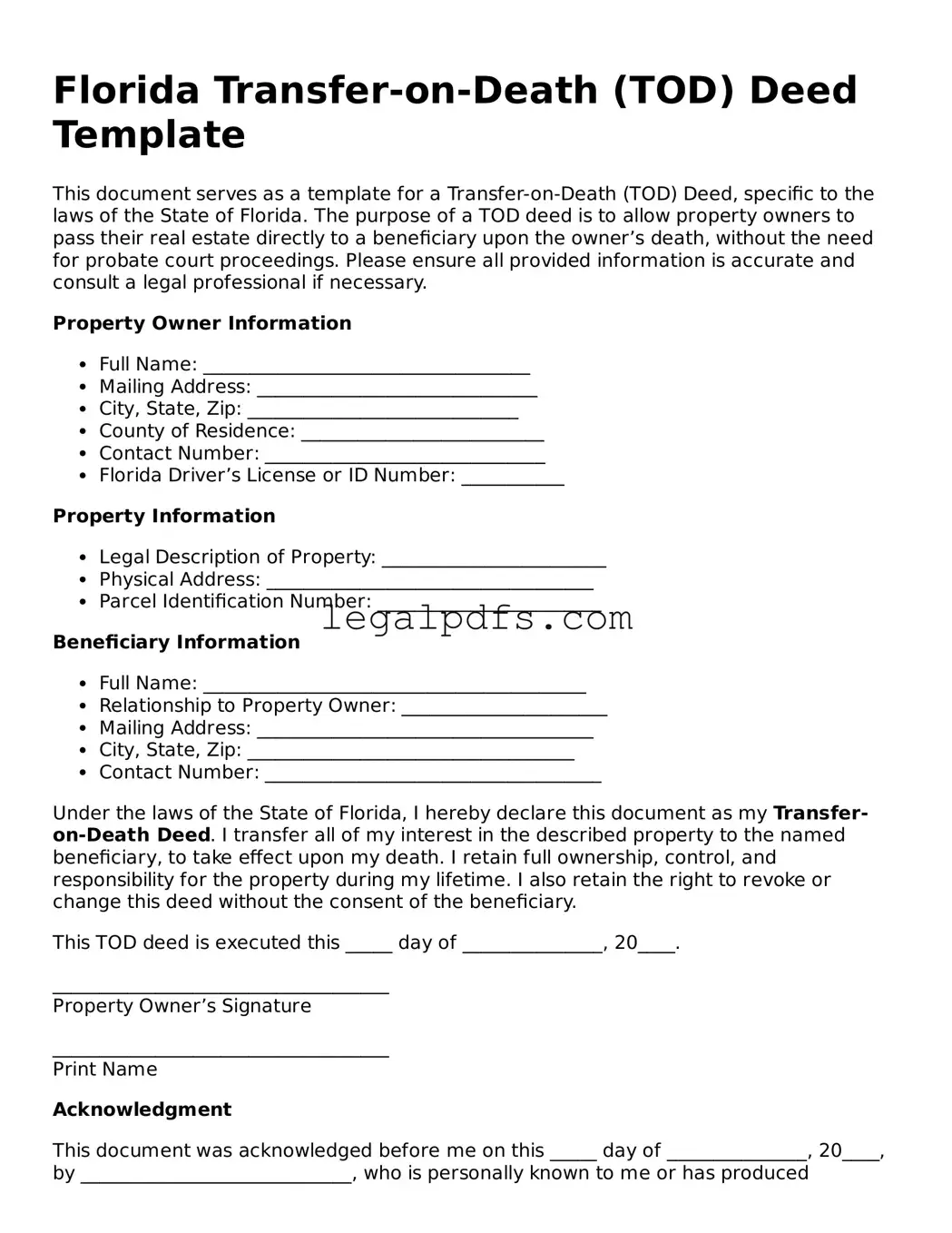What is a Transfer-on-Death Deed in Florida?
A Transfer-on-Death (TOD) Deed in Florida is a legal document that allows property owners to pass their real estate directly to a beneficiary upon their death, bypassing probate court. This deed becomes effective only upon the death of the property owner, ensuring that the property is transferred smoothly to the designated recipient.
Who can use a Transfer-on-Death Deed?
Any property owner in Florida who wishes to ensure their real estate is passed on to a designated beneficiary without the need for probate can use a Transfer-on-Death Deed. This is especially useful for individuals who want to ensure a seamless transition of property ownership.
How does one create a Transfer-on-Death Deed in Florida?
To create a Transfer-on-Death Deed in Florida, the property owner must prepare a deed that complies with Florida's legal requirements. This includes identifying the property, the beneficiary, and signing the deed in front of a notary public. It is also crucial to record the completed deed with the county recorder's office where the property is located.
Can a Transfer-on-Death Deed be revoked?
Yes, a Transfer-on-Death Deed can be revoked at any time by the property owner before their death. Revocation can be achieved by executing a new deed that expressly revokes the prior deed or conveys the property to someone else, and then recording it with the county recorder's office.
Does a beneficiary pay taxes on a property received through a Transfer-on-Death Deed?
While the property itself is not subject to probate, the beneficiary may still be responsible for federal estate taxes if the estate exceeds certain thresholds. Additionally, there might be other tax implications, such as inheritance or property taxes, depending on the situation and the beneficiary's relationship to the decedent.
Is a Transfer-on-Death Deed the same as a will?
No, a Transfer-on-Death Deed is not the same as a will. While both can dictate the distribution of assets upon death, a TOD Deed is exclusively for real estate and takes effect immediately upon the property owner's death without the need for probate. A will, however, can cover a broader range of assets and must go through probate before distribution.
What happens if the beneficiary predeceases the property owner?
If the designated beneficiary predeceases the property owner, the Transfer-on-Death Deed typically becomes null and void unless a contingent beneficiary is named in the deed. The property would then be distributed according to the property owner's will or, if none exists, under Florida's intestacy laws.
Can a Transfer-on-Death Deed be contested?
Like any legal document, a Transfer-on-Death Deed can be contested, although it is designed to be straightforward and minimize disputes. Grounds for contest could include questions of the property owner’s mental capacity at the time the deed was signed or allegations of undue influence or fraud.
How does a Transfer-on-Death Deed impact the property owner's right to sell or mortgage the property?
The property owner retains full control over the property until their death, meaning they can sell, lease, or mortgage the property as they wish. The Transfer-on-Death Deed only affects the transfer of property ownership upon the death of the owner, without impeding their right to manage the property during their lifetime.
